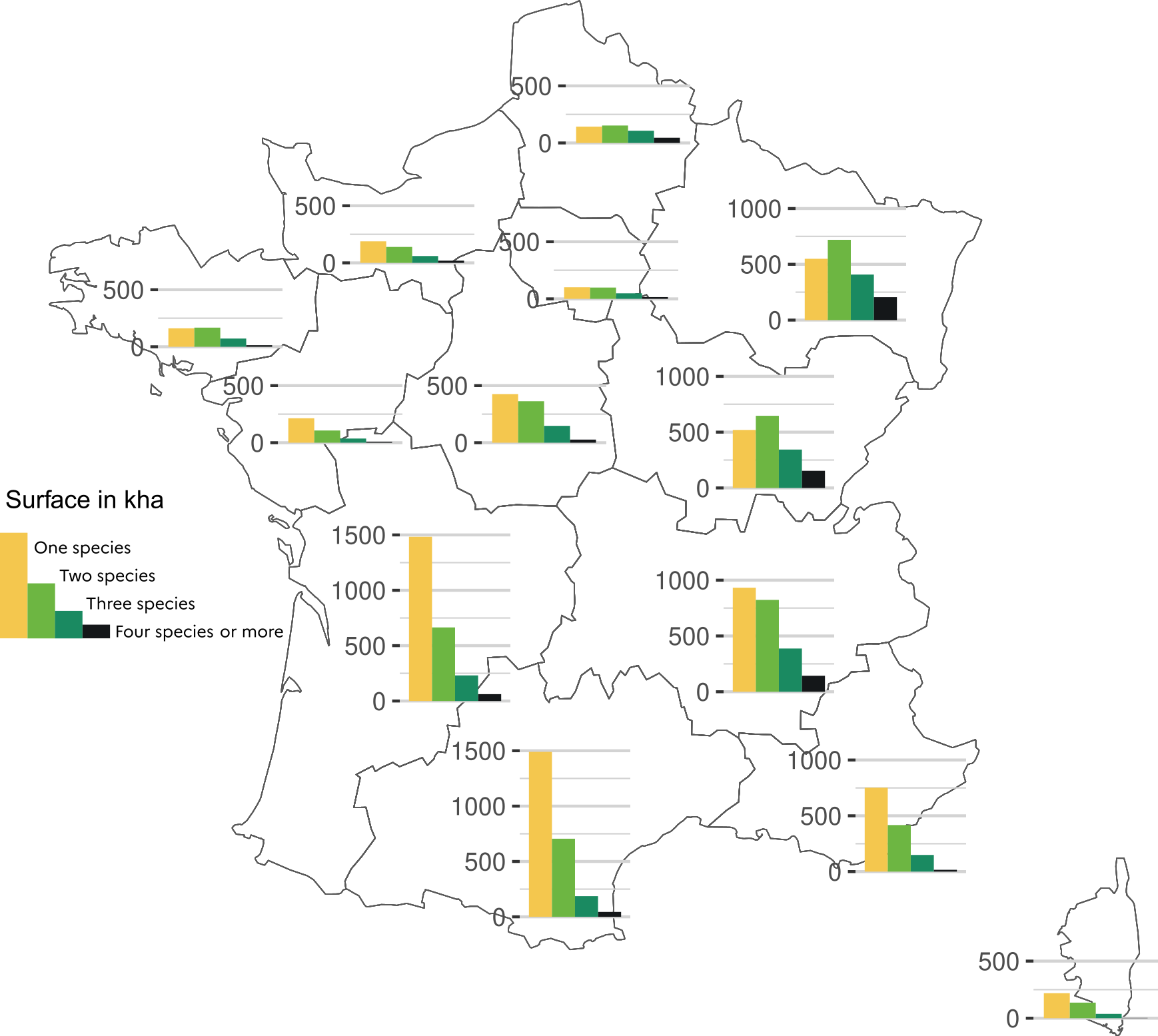
Current state
French forests are mainly composed of broadleaves, which account for 67% of the total forest area [1].
The French national forest inventory records information on more than 190 different tree species, including 142 broadleaves!
A main species is defined as a tree species whose canopy cover is the highest on a given plot. The main species covering the French territory include oaks, beech, Maritime pine, Scots pine, Silver fir and Norway spruce. Broadleaved trees are mostly located in flat and low-elevation areas, except the Landes of Gascogne region in southwestern France, which is dominated by maritime pine. Conifers are more common in mountainous and Mediterranean areas. The spatial distribution of these species is displayed on the map below.
| Interactive map ! Select the species you want to visualize using the button on the top left side of the map. 
|
|
Species diversity of the French forest [2]
The French forest is composed of half pure stands [3] (7.2 million ha), and half mixed stands [4] (8.1 Mha).
Pure stands, also known as monospecific or single-species stands, are those where a single tree species occupies more than 75% of the canopy cover.
Stands composed of two predominant species account for one third of all forest stands, while those with three or more predominant species account for 19% of the forest.
Northeastern forests and those in the Massif central region have the highest species diversity. In contrast, the Landes Massif is dominated by large monospecific stands of maritime pine.

Evolution of forest stands in terms of species diversity [5]
The proportion of pure deciduous stands has slightly increased from 63% in 1985 [6] to 67% today. This change is more pronounced when considering absolute values: the area of deciduous stands has grown from 8.3 million hectares in 1985 to 10.3 million hectares today.
Over the past 40 years, 7 departments have more than doubled their area of deciduous stands: Côtes d’Armor, Finistère, Southern Corsica, Upper Corsica, Morbihan, Loire Atlantique, and Manche.
The area of coniferous stands has declined from 3.7 million hectares in 1985 (28% of the total forested area) to 3.1 million hectares (20% of the total forested area) today.
At the department scale, changes are moderate except in the Landes Massif (-117 000 ha) and Gironde (-81 000 ha) which have been affected by major storms in 1999 and 2009.
The area of mixed stands [7] has increased from 1.2 million hectares (9% of the forested area) in 1985 to 1.9 million hectares (12% of the forested area) today.
More information on the diversity of French forests available here











